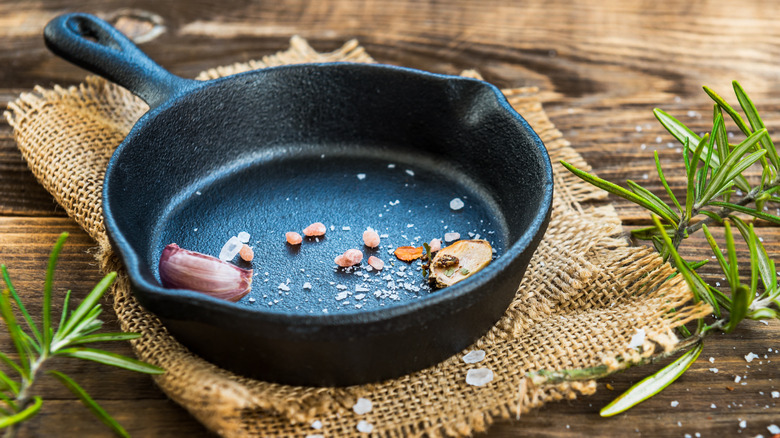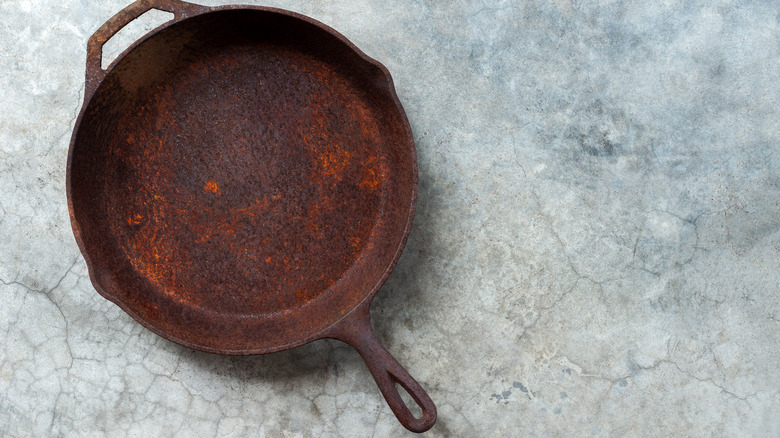Tips To Identify A Vintage Cast Iron Skillet
The undisputed king in the kitchen is the cast iron skillet. According to Kitchn, the heavy-grade iron holds heat more efficiently and distributes it more evenly, ensuring well-seared meats and perfectly roasted vegetables. It goes seamlessly from stovetop to oven and, because it's seasoned (meaning oil is baked into the pan through polymerization), the naturally nonstick surface only gets better with age.
Cast iron devotees swear by vintage skillets. Montana Cast Iron points out that the early cast iron pieces were hand-cast in a mold. This sort of quality control led to a thinner, and therefore lighter, pan. The hand-finishing gives vintage cast iron a smoother cooking surface. If you're planning to use the pan to cook, the name brand isn't as important. Non-branded pans — or ones from Sears or Montgomery Ward, for example — are often cheaper since they aren't considered collectibles.
Cast iron made before 1957 is considered vintage, per Uno Casa. If you can afford it, pay a dealer to source it for you. Since dealers know exactly what to look for, they'll deliver a pristine pan that is stove-ready. However, the price can start at $75 and go up from there (via Kitchn). For those more cost-conscious — or if you believe that part of the fun is the hunt — flea markets and antique stores are prime sources for quality vintage cast iron cookware, often for as little as $20.
How to source a vintage cast iron skillet
If you're up for the challenge, Uno Casa offers some tips for sourcing vintage cast iron skillets. To start, is it heavy? Even if it's hand-casted, cast iron still has heft, the maker explains, with pans weighing in anywhere between four and 12 pounds — eight pounds being the median. Check the bottom for a manufacturer logo, stock number, and, sometimes, but not always, the city where the pan was made. Since real cast iron skillets are molded, there are no seams or handle attachments. The entire pan should be one piece.
Finding reddish-orange rust is actually a good sign — it proves that the pan is indeed made from cast iron. Cleaning the rust off is simple. Per Bon Appétit, a vinegar soak followed by a good scrub using mild detergent, warm water, and steel wool should remove any oxidation. Dry the cast iron immediately to keep it from rusting again. Since the cleaning process strips off the seasoning, you'll need to re-season your (hopefully) vintage find by coating the entire skillet with a high-smoke-point oil and baking in a 350-degree Fahrenheit oven for an hour (via Bob Vila).

